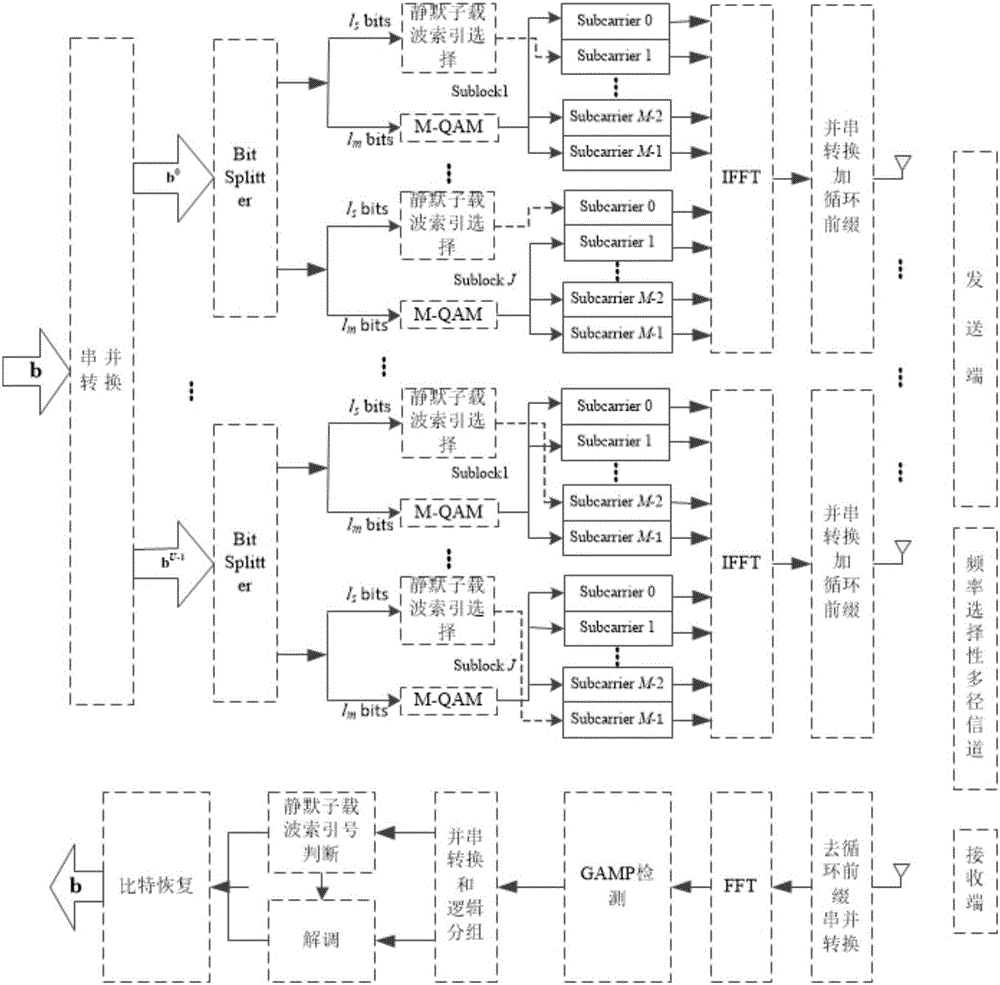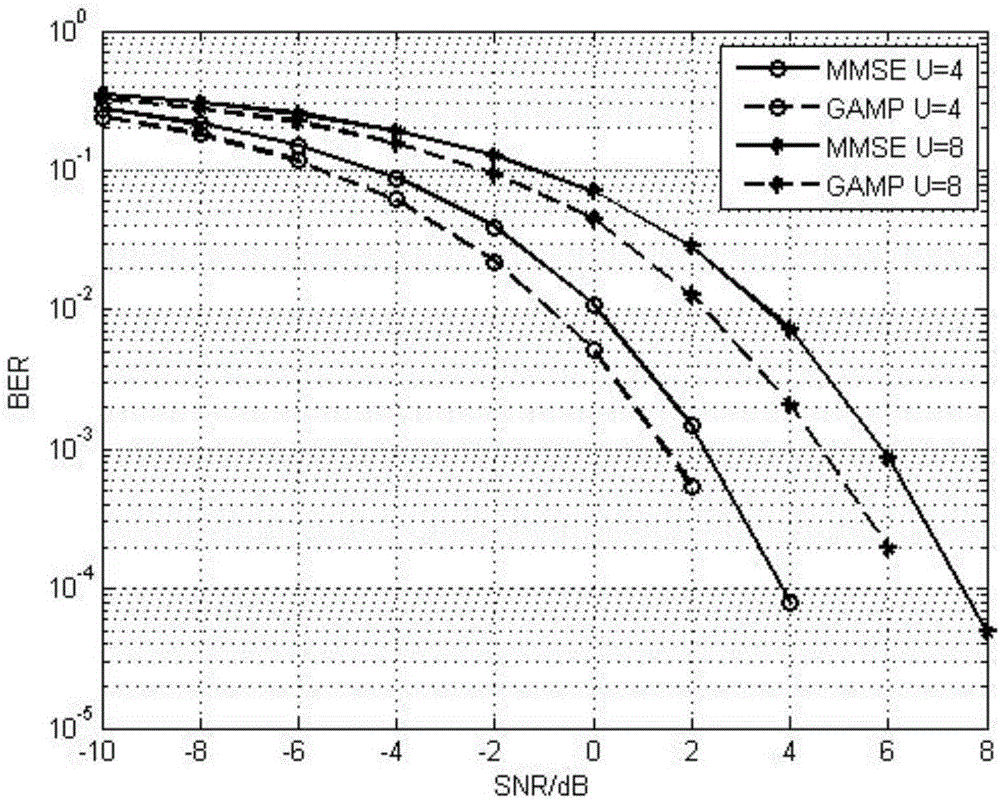Multi-user sub-carrier index modulation orthogonal frequency-division multiplexing (SIM-OFDM) transmission method
An index modulation and orthogonal frequency division technology, which is applied in the transmission system, multi-frequency code system, modulated carrier system, etc., can solve the problems of spectrum waste, high complexity, and unsatisfactory bit error characteristics, etc.
- Summary
- Abstract
- Description
- Claims
- Application Information
AI Technical Summary
Problems solved by technology
Method used
Image
Examples
Embodiment Construction
[0036] The technical solution of the present invention will be further introduced below in combination with specific embodiments.
[0037] This specific embodiment discloses a multi-user subcarrier index modulation OFDM transmission method, such as figure 1 shown, including the following steps:
[0038] S1: sub-carrier logical block: divide K sub-carriers into G=K / M sub-blocks according to QAM modulation order M logic, each sub-block contains M sub-carriers, and set only one sub-carrier in each sub-block to be silent, The remaining subcarriers are activated.
[0039] S2: user information bit grouping: the l input bit of user u is converted into sequence b after serial-to-parallel conversion u , will b u Divided into G groups of information bits U is the total number of users, is the gth group of information bits.
[0040] S3: subcarrier index modulation preprocessing: divide each group of information bits into two parts: the first l s = log 2 The M bit is used as the ...
PUM
 Login to View More
Login to View More Abstract
Description
Claims
Application Information
 Login to View More
Login to View More - R&D
- Intellectual Property
- Life Sciences
- Materials
- Tech Scout
- Unparalleled Data Quality
- Higher Quality Content
- 60% Fewer Hallucinations
Browse by: Latest US Patents, China's latest patents, Technical Efficacy Thesaurus, Application Domain, Technology Topic, Popular Technical Reports.
© 2025 PatSnap. All rights reserved.Legal|Privacy policy|Modern Slavery Act Transparency Statement|Sitemap|About US| Contact US: help@patsnap.com



